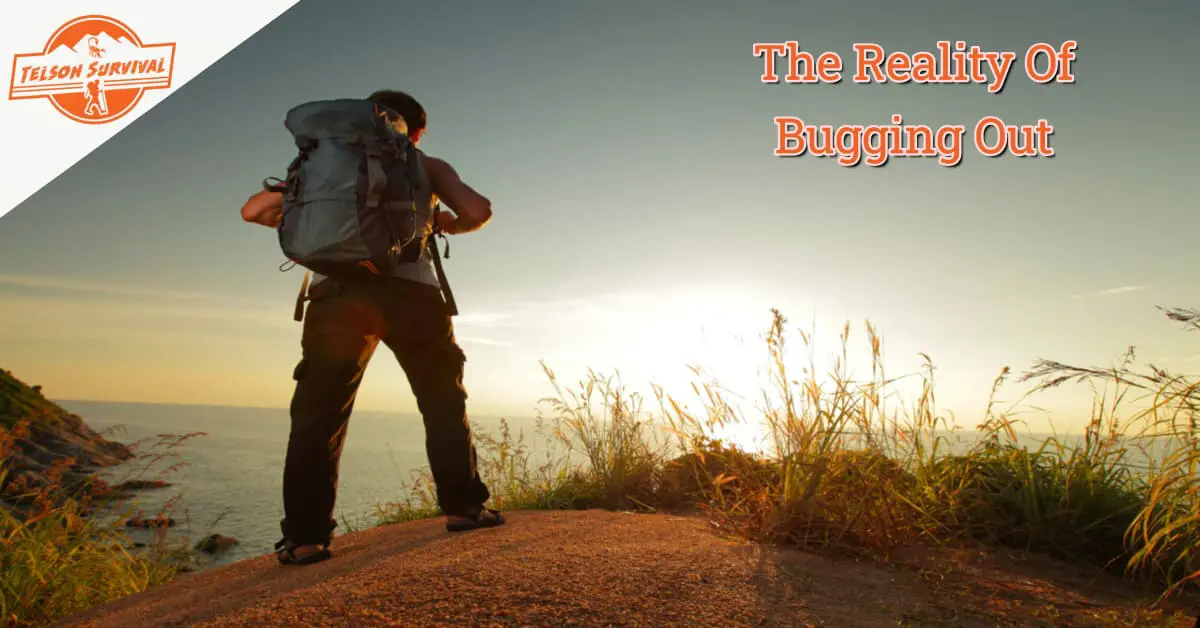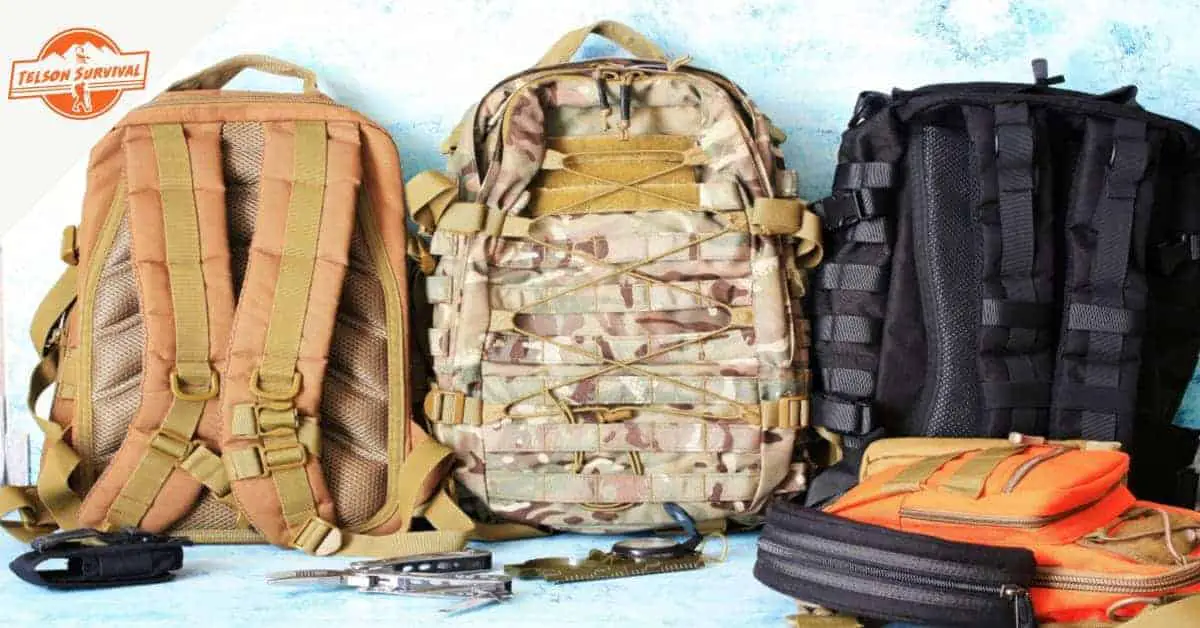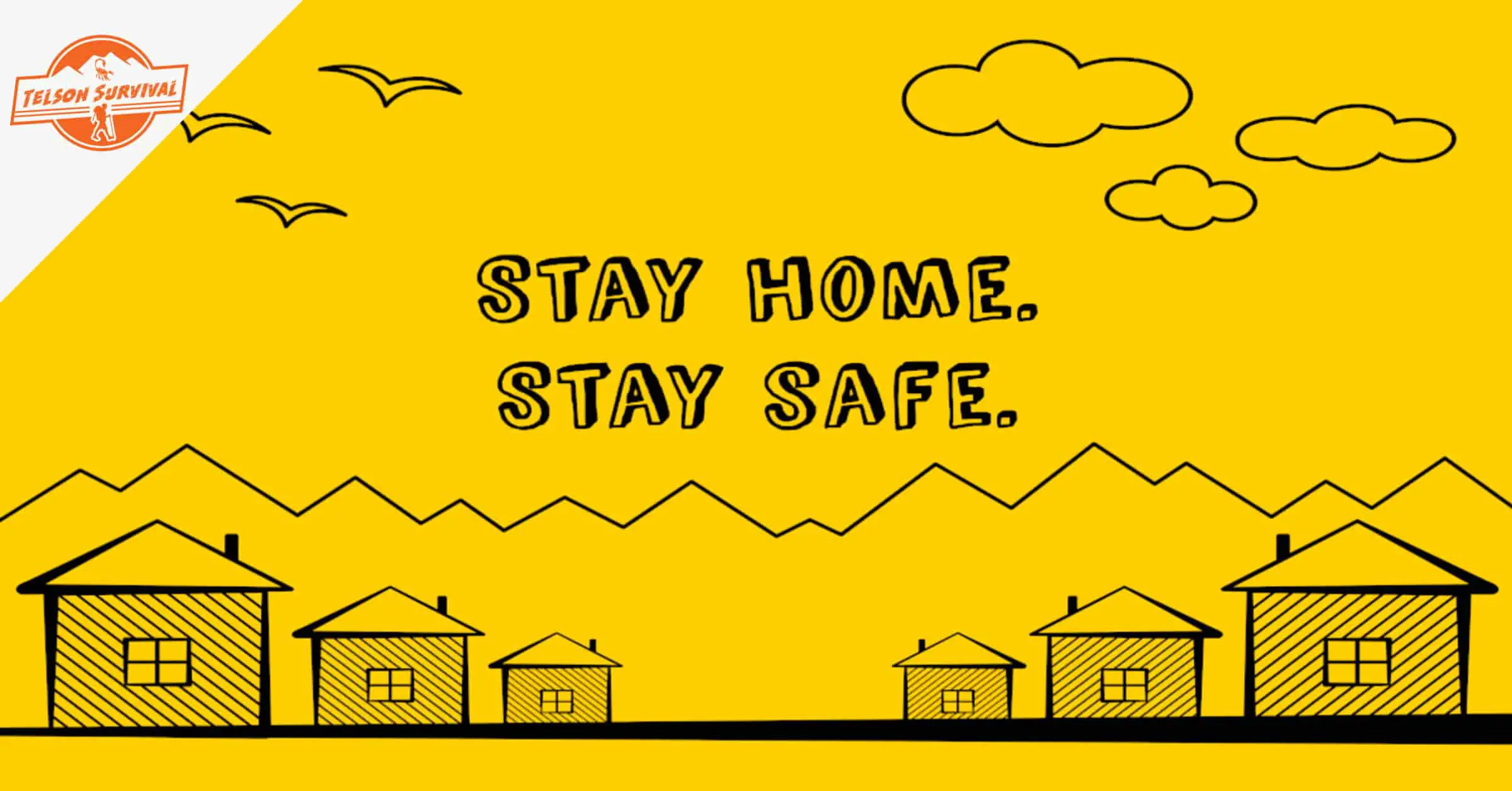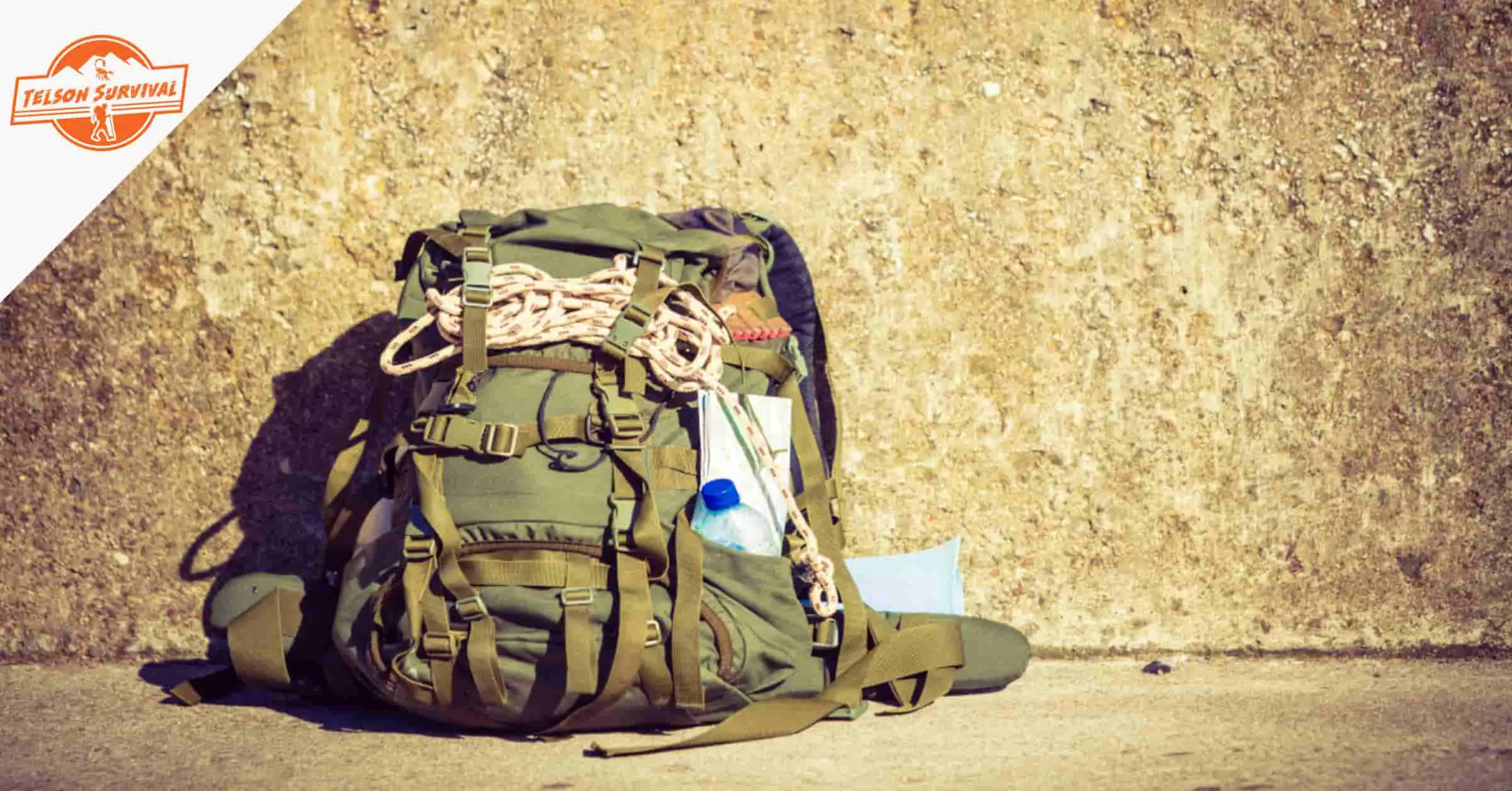The term bugging out is not new anymore in our day. But, what mental image do people build when they hear of bugging out? Someone loaded with a huge 80-liter backpack and a few other smaller bags hanging on their shoulders and hands as they leave their home for a supposedly safer location? And is that the original idea of the reality of bugging out?
The origins of the reality of bugging out are linked to the early 1950s Korean War. Bugging out described the US army’s practice of assigning alternative defense positions to be taken in the event being overrun was imminent and the units had to retreat (“bug out”).
As a term, however, “bugging out” may already have been used in different circumstances during World War II. But, its usage among civilians, as we know it today, only became real in the mid-1950s.
Today, most people conceive bugging out as simply grabbing a survival bag that you’ve already put together for when disaster strikes and getting the hell out of the SHTF area to a location where safety and survival are more probable.
But, is that all there is to bugging out? We’ll be answering that and all your other bugging-out questions in this article. Let’s get right to it!
What does bugging out mean?
Bugging out means abandoning your home in the event of an emergency and hastily heading to a location that is deemed safer than your current one, and in which your survival chances are higher.
To be safer and have greater chances of survival, however, bugging out must be prepared for in advance through certain well thought out decisions and actions:
- Knowing or identifying possible bug out situations.
- Identifying a bug out destination.
- Identifying a bug out route.
- Prepping with a bug out vehicle and/or a bug out bag.
Know Possible Bug Out Situations
We’ll tell you more about bug out situations in the next section. But it’s important to know that being aware of the type of disasters that can affect the area where you live is extremely important when preparing for bugging out, even though some types of disasters can be ubiquitous.
For example, not every part of the globe is prone to Tsunamis. Since being in a Tsunami-prone zone will require you to move to higher ground, your bug out preparations must put that into account.
Identify a Bug Out Destination
As much as it may not be easy to head to a fixed destination when SHTF, identifying safe areas where you could bug out from a disaster-hit area is crucial.
One wise way to do this is to have several options then decide on the best one when disaster hits. We’ll tell you more about where to bug out a little later.
Identify a Bug Out Route
Once you have your bug out location identified, you need to plan and practice a bug out route. Some countries have guidelines for evacuation routes and safe locations for disasters like the Tsunami, which could serve as your primary bug out route and location for such disasters.
Prepping with a Bug Out Vehicle and/or a Bug Out Bag
Depending on whether you plan to bug out by foot or in a vehicle (which will also be defined by the type of disaster), you need to have a bug out vehicle and/or bug out bag ready with everything you need on your bug out survival list.
What is a Bug Out Situation?
A bug out situation is a natural or man-made disaster that prompts you to leave your home or current location in search of a safer bug out location where the chances of surviving the disaster are greater.
Natural Bug Out Situations
These are emergency situations that are created by natural occurrences and which threaten your health or life should you decide to stay in your home or current location. As such, they push you to bug out to safety.
They include:
- Hurricanes: Bug out as soon as a hurricane watch is issued (48hours prior). Waiting for the hurricane warning (36hours prior) may be too late to bug out owing to extreme traffic or the danger of being caught up on your evacuation route.
- Tornadoes: Unless you have a tornado safe room that is extremely reliable, you should consider bugging out when a tornado watch is issued.
- Earthquakes: You may not need to go too far when earthquakes strike. But since strong earthquakes come with extreme destruction, bugging out, even outside your home in an open area is a safer option.
- Tsunamis: Tsunamis often have predecessor signs like earth tremors or earthquakes. The aggressive nature of Tsunamis should make you bug out immediately any time a tsunami watch/warning is given or you have noticed unusual water movement or earth tremors/earthquakes, and especially if you are in Tsunami-prone areas.
- Floods: You should bug out from low land to higher grounds when a flood watch or warning is issued for your area.
- Landslides: Contrary to what many might think, landslides are the most common geological events according to the WHO. Depending on their magnitude, they can be deadly. So bugging out when a landslide warning or an evacuation notice is given could be the difference between life and death.
- Others: Wildfires, extreme winter storms, drought, heatwaves, volcanic eruptions, and even pandemics can all qualify for natural disasters that require you to bug out if staying put predisposes you to greater danger.
Read about how to survive natural disasters in our related guides.
Man-made Bug Out Situations
Man-made bug out situations are emergencies that occur as a result of human activity, placing you in danger and requiring you to move away from your home or current location as a safer option.
The emergency bug out situations include:
- Civil unrest: The collapse of public order where people become desperate and lawlessness is amplified. Being ready for this kind of situations with an urban bug out bag will enhance your survival when:
- Your home is in an immediate threat of attack.
- The civil unrest is escalating quickly and staying put would be a big risk.
- You are not in a position to defend yourself should attackers approach.
- Bugging out is safer than bugging in.
- Civil war: The break out of civil war should get you considering to bug out immediately since, often, those who usually have the duty to protect civilians are not able to. It would not be a bad idea to prep with a trans-border bug out bag when it comes to the threat of civil war. And that means listing a passport and some good amount of cash on your bug out bag list.
- Terrorist attacks: These tend to be isolated occurrences. But, if they should present a repetitive pattern of bombings or biological attacks, then you should consider bugging out.
- HAZMAT spills: Hazardous Material spills can be fatal or cause injury and illnesses. They can happen during production, transportation, or storage. If you live, work, or learn near cargo routes, you should be prepared to bug out at a short notice.
- Others: Other possible man-made disasters that could call you to bug out include biological/chemical wars, economic collapse, and long-term grid-down emergencies (power, food, and medical shortages that last for months).
Is Bugging Out Safe or a Bad Idea?
Bugging out can be either safe or a bad idea depending on the extent of the danger posed by the emergency situation and how prepared you are for the emergency. Depending on these two factors:
Bugging out is safe if:
- You can move without placing yourself in greater danger than that already created by the disaster situation.
- You have time to get to safety after a natural disaster watch/warning has been given.
- You have a definite bug out destination and are not heading to the middle-of-nowhere.
- You have a complete bug out bag with survival provisions for at least 72 hours.
- You have prepped for the worst SHTF situations by learning key prepper survival skills.
Bugging out is a bad idea if:
- There’s heavy bombing during an attack and bugging out would be too risky.
- You are heading to ‘no man’s land’, a non-defined destination you have not thought of before the emergency.
- There are chances your destination could pose the same or worse danger as your current location.
- You have a physical challenge that makes movement difficult for you, especially if you’ll be required to run or be on foot for long hours.
- You have no bug out bag and no idea about basic survival skills like how to start a fire or how to stay warm in extreme temperatures.
Is it Better to Bug in or Bug out?
There is no clear-cut answer to whether you should bug in or bug out. The choice to bug in or bug out depends on a number of factors:
- The type of disaster (see our answer to the question “What is a bug out situation?” above).
- Your survival preparation plan.
- The extent of the danger that threatens your survival if you bug in or bug out.
- How easy (or not) it is to move (availability of transport).
When You Should Bug In
- Moving to a bug out location would be more dangerous than staying put.
- You do not have a bug out location or safe destination.
- You have a safe room or bunker where you can be protected under any circumstances during the emergency.
- You have reinforced your home in such a way that it can withstand the threatening danger (see our guide on how to prepare your home for bugging in).
- You have a medical condition that does not allow you to be out struggling to reach a bug out location amidst a looming or an already happening emergency.
When You Should Bug out
- Staying home during a disaster would be more dangerous than bugging out and seeking safety in a different location.
- A natural disaster is looming and a watch/warning or evacuation order has been made.
- The area where you live has been declared unsafe following the detection of potential natural disasters.
- You have a safe bug out destination or know a public safety center where you can seek shelter.
- You have not stockpiled for bugging in or the resources you have are depleted (you are better off bugging out where you can find alternative survival options).
Where to Go When Bugging out?
When you bug out, you should go to a location that is safer than your current location, which should also be predetermined in advance for greater safety. It could be a rural home or a bug out bunker.
Nonetheless, not everyone can have a predetermined place to bug out, so you have to consider ad hoc options. Here are 5 places you can go to when you bug out:
A Bug Out Rural or Off-grid Home
If you live in the city, you can purchase or build a rural bug-out home in a distant location that would be safer if SHTF.
Work with a real estate agent that is specialized in bug-out properties or explore options from online real estate marketplaces for off-grid and rural properties like survivalrealty.com.
Bug Out at a Family or Friend’s Home
Check with family members or friends living away from the city if they would have you if SHTF. You could even make a mutual deal to let whoever among you needs it bug out in the other’s home when disaster strikes.
Find or Create a Bug Out Shelter on Public Land
If you don’t have your own bug out location, you can opt to search through topographical maps for secluded public land that could serve as a favorable location to make a temporary shelter when you bug out.
The options for public land bug out locations could be:
Seek Safety in a Government-run Shelter
Especially when it comes to natural disasters, the government knows best and you might be safer opting to seek refuge at a government-run shelter.
Whether it is among your primary options or your last option for a bug out location, there are few things you need to bear in mind when you bug out at a government-run shelter during an emergency.
- You’ll still need to have your bug out survival bag with you as there may be little or no survival provisions for the large crowds seeking shelter. We’ll talk about the necessity of a bug out bag during an emergency in a bit.
- Government officials running the survival shelters are bound to maintaining law and order, which means you may not be able to bring in armaments for self-defense and anything deemed to be a weapon.
Go to the Woods or Wilderness
We did say that you should have a predetermined destination when you prep for bugging out should SHTF.
Sometimes though, going to the wild can be an option. For example, a widespread total collapse of public order due to civil unrest or civil war in a country could make you consider being in the wild for survival.
Also, even though they are more of fiction than possible realities, disasters take the nature of the mythical zombie apocalypse and TEOTWAWKI would call for bugging out in the woods/wild.
For more information on places you can go in case of emergency or if SHTF, check out our detailed guide on bug out locations for preppers.
Is a Bug Out Bag Really Necessary?
Yes, a bug out bag is extremely necessary if you are serious about increasing your chances of survival when SHTF.
Imagine running away from rioting crowds in a city for hours on end and not having a little water to hydrate or an energy bar to replenish your strength and keep going?
That without mentioning what you would do if you got sick and had no medical supplies or any of the other survival supplies.
Take it from this redditor who, together with her children braved better the flooding caused by the 2017 Hurricane Harvey because they each had a bug out bag. They even had to put up with being targets of those who had no bug out bags.
Final Thoughts on the Reality of Bugging Out
An army at war in the 1950s had it clear that the assailant could overpower and their troops would need to retreat. And thus was born the great bug-out idea.
Similarly, a wise 21st-century prepper knows that disaster could strike any time, and bugging out could be an option.
Being aware of possible bug out situations, having a bug out destination, identifying a bug out route, and having a bug out bag/vehicle are all pro-survival decisions that any prepper should make today.
After all, ours is an era of real and threatening disasters!










